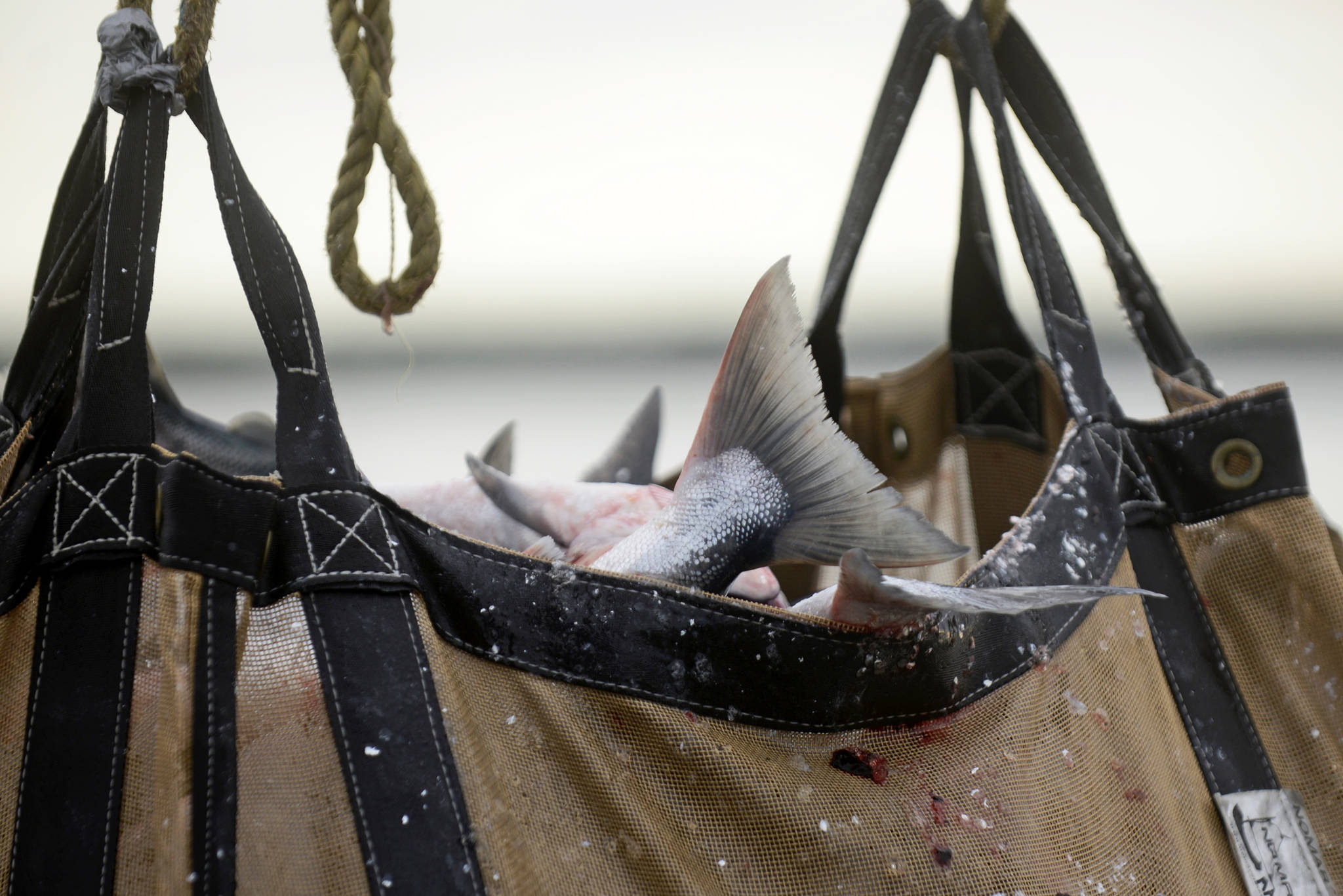The sockeye salmon run to the Kenai River is weaker than the Alaska Department of Fish and Game predicted in the preseason forecast, according to an inseason update issued Tuesday.
Fish and Game is now estimating the Kenai River sockeye salmon return to be less than 2.3 million fish. In the preseason forecast issued in November 2017, the biologists had estimated the run at 2.5 million, which was already significantly below the 20-year average of 3.6 million fish.
The lower estimate means management changes for the commercial fishermen in Upper Cook Inlet. Through July 31, setnetters in the Kenai and Kasilof sections won’t be able to fish more than 24 hours per week, with the exception of the East Forelands Section. Drift gillnet fishermen will have to fish in the expanded Kenai and Kasilof sections, known as the corridor, through July 31.
After Aug. 1, the setnetters in the Upper Subdistrict will fish their regular periods on Mondays and Thursdays and up to 24 hours of additional fishing time per week, with mandatory no-fishing windows, according to the updated inseason assessment.
For the drift fleet, after Aug. 1, the regular Monday and Thursday fishing periods can be fished in all waters of the Central District, according to the assessment.
Making the lower end of the Kenai River sockeye salmon escapement goal takes precedence over exceeding the Kasilof River’s sockeye salmon escapement goal of 160,000–390,000 fish, according to the release.
Commercial fishermen had harvested just over 1 million fish as of Monday, 736,249 of which were sockeye, according to Fish and Game’s inseason harvest reports. Daily passage of sockeye on the Kenai River sonar ticked up this weekend, reaching a season peak so far of 62,623 on Saturday. As of Monday, 328,239 sockeye had passed the sonar, according to Fish and Game.
The Kasilof River sockeye salmon escapement goal has already been met, with 237,533 sockeye having passed Fish and Game’s sonar as of Monday.
Statewide, sockeye salmon harvests are below forecast everywhere other than Bristol Bay. Total salmon harvest is down by about a third, according to an inseason harvest update from the Alaska Seafood Marketing Institute and the McDowell Group.
Reach Elizabeth Earl at eearl@peninsulaclarion.com.

